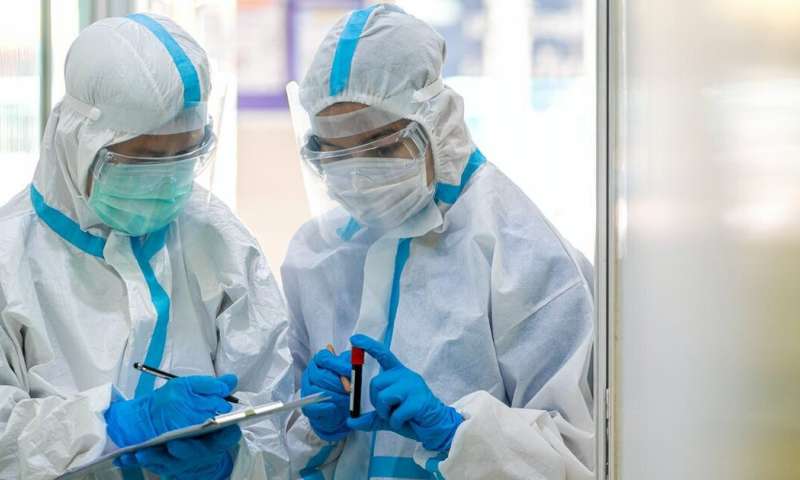The coronavirus strain first linked to the COVID epidemic in India has now spread to at least 44 countries and been classified as a “variant of concern”, but health authorities still know relatively little about it.
Spotted for the first time in October 2020 in India, it this week joined the British, South African and Brazilian variants in the World Health Organization’s (WHO) highest threat category.
Here is what we do and do not know about the strain.
One variant or three?
The name “Indian variant” describes a strain—B.1.617—that in fact groups together three distinct subvariants sharing some, but not all, of several mutations.
Two of the three have been detected in dozens of countries around the world, while the third has not spread much beyond India.
The WHO said on Tuesday that although there “may be important differences among the three sublineages”, there is currently not enough evidence to tease out individual classifications, so it grouped them together as a single “variant of concern”.
More transmissible?
In India, where the number of officially-recorded COVID-19 deaths has passed a quarter of a million, there are suspicions that this new variant may have accelerated the virus spread.
But it is more complicated than that, according to the WHO.
It said there were potentially several factors driving the exploding epidemic, including variants that could be more transmissible; religious or political mass gatherings that increased social mixing; and reduced use of public health measures.
“The exact contributions of each of these factors on increased transmission in India are not well understood,” it said.
However, it did say that the three sublineages “appear to have higher rates of transmission”. They have been observed, for example, to spread more rapidly in other countries once they gain a foothold.
Other health bodies around the world have also warned about signs of heightened contagion.
Indeed, all three subvariants contain a pair of mutations associated with greater transmissibility.
In a report released on Thursday, Public Health England looked at one of the sublineages—B.1.617.2—which has “grown rapidly in England”, with more than 1,300 cases identified across the United Kingdom.
It said this version of the coronavirus is “at least as transmissible” as the so-called English variant, which itself is faster-spreading than earlier versions.
But assessments of transmissibility depends a lot on who is and is not being tested.
The European Centre for Disease Prevention and Control has warned that targeted genetic testing of travellers from India may have caused an “overrepresentation” of the Indian variant in the UK and the EU surveillance.
More dangerous?
The ECDC says there is no information available on the severity of symptoms caused by the Indian variant.
There is also only very limited data on how well the variant evades the body’s immune response, and the WHO says the potential impact on vaccine efficacy and the risk of re-infection remains unclear.
A recent study that has not yet been peer reviewed noted a reduction in the efficacy of BioNTech/Pfizer and Moderna vaccines on the B.1.617.1 sublineage.
This sublineage has a mutation to the virus’ spike protein, E484Q, that is similar to the one found in the South African and Brazilian variants, both of which are suspected of leading to reduced vaccine efficacy and an increased risk of re-infection.
But the ECDC points to small studies suggesting that B.1.617.1 can be neutralised by monoclonal antibodies, as well as blood plasma from previously infected or vaccinated people.
It said there was no data for the second sublineage, which does not include the E484Q mutation.
So far “we are pretty confident overall that the vaccines generally will be covering this variant”, Marco Cavaleri, the European Medicines Agency head of vaccine strategy, said this week.
But faced with a host of uncertainties over the variant’s impact on the virus itself and how this affects public health measures, the WHO said further robust studies are “urgently needed”.


